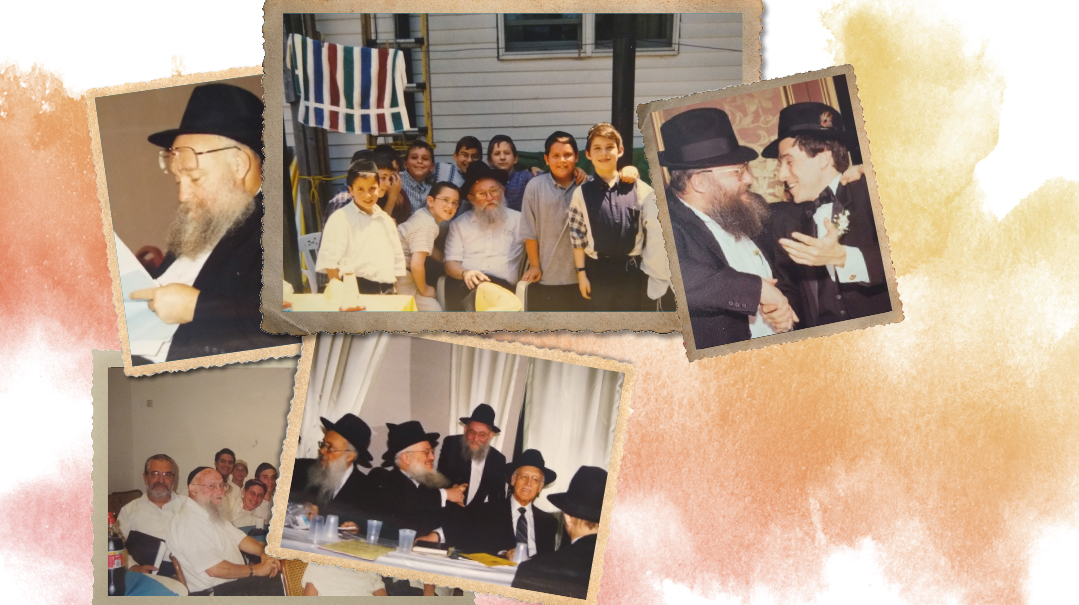Dream It, Do It
| March 3, 2021On his 13th yahrtzeit this 17 Adar, a tribute to the indefatigable Reb Eli Teitelbaum

Photos: Family archives
It was the 1960s, and Eli Teitelbaum was just a bochur when his star began to rise. The son of a rabbi from Kew Gardens, Queens, Eli was short, focused, a powerhouse of energy, and determined to channel his talents, charisma, and easy rapport with children into Klal Yisrael’s future: the youth.
“It’s no exaggeration to say that he was one of the Founding Fathers of American Yiddishkeit in the 1960’s — or that there was no yeshivah boy in Brooklyn who did not know Eli Teitelbaum’s name,” says Rabbi Shimon Grama, former National Director of Pirchei Agudas Yisrael.
Rabbi Grama, some years younger than Eli, paints a picture of the landscape in those years, and Eli’s role in slowly changing it. Whether it was the Chol Hamoed trips he organized, the plays he initiated, or the choir he started, “Eli knew instinctively that children need to DO things,” says Rabbi Grama. “They cannot be inactive, and they cannot just go to yeshivah and come home to eat and sleep — which some people expected of them in those days. They need programs and prizes and activities, and he made those available through his innovations. All his programs created a ‘matzav’ for the kids, offering enrichment and fulfillment and fun, through which they got more involved in Torah and Yiddishkeit.”
Chol Hamoed often found parents working and yeshivos closed. Taking children on Chol Hamoed trips was not widespread in the 1960s parenting psyche. The children, naturally, were bored. Eli Teitelbaum took in the situation and reacted. Signs were hung, buses ordered, parental permission and group tickets obtained, and the Pirchei Chol Hamoed trip was born. It was safe, it was constructive, it was active, and the kids loved it.
The Pirchei choir was another Eli Teitelbaum invention. A musician himself and very technically savvy, Eli worked on the song selection and logistics, with Eli Lipsker as producer and musical arranger. Choirs and singing became part of Pirchei. The children who took part were empowered with a special sense of accomplishment, while Eli, always an enthusiastic volunteer, carefully put aside the proceeds from the albums to fund the annual Pirchei Siyum Mishnayos arranged by Reb Josh Silvermintz.
Then there were the plays. Still a bochur himself, Eli procured the use of local public school auditoriums, where the Pirchei group only had to pay for cleaning costs, and under his direction, the young performers gave their all. Rabbi Grama recalls Eli going to Manhattan to rent costumes from Broadway suppliers and getting them checked for shatnez. “The Family Aguilar ,” by Marcus Lehman, was so well-received in the community that it ran for six or seven nights.
“He was of the opinion that as important and serious as Yiddishkeit is, it is fun too, and it should be made fun for the youth,” says Neginah Orchestra conductor Yisroel Lamm, who was close to Eli since his teenage years.
Eli was multifaceted; short in stature, scholarly and well-versed in mathematics and science, he was also strong, disciplined, and physically fit. He achieved a black belt in karate, and at times when non-Jewish youths picked fights with the Torah Temimah boys, he was their protector.
“He was fearless,” says Rabbi Nosson Scherman of ArtScroll, recalling his close friend Eli emerging from the yeshivah building, accosting a couple of tall, strong city youths, and “laying them out on the sidewalk.”
In another forward-thinking move, Eli, an extremely strong swimmer who served as lifeguard at Camp Agudah, contacted the Red Cross and arranged for their staff and examiners to train and test a frum mens’ cohort at the Boro Park Y, thus providing possibly the very first group of frum lifeguards to the Orthodox camping world.
Oops! We could not locate your form.












